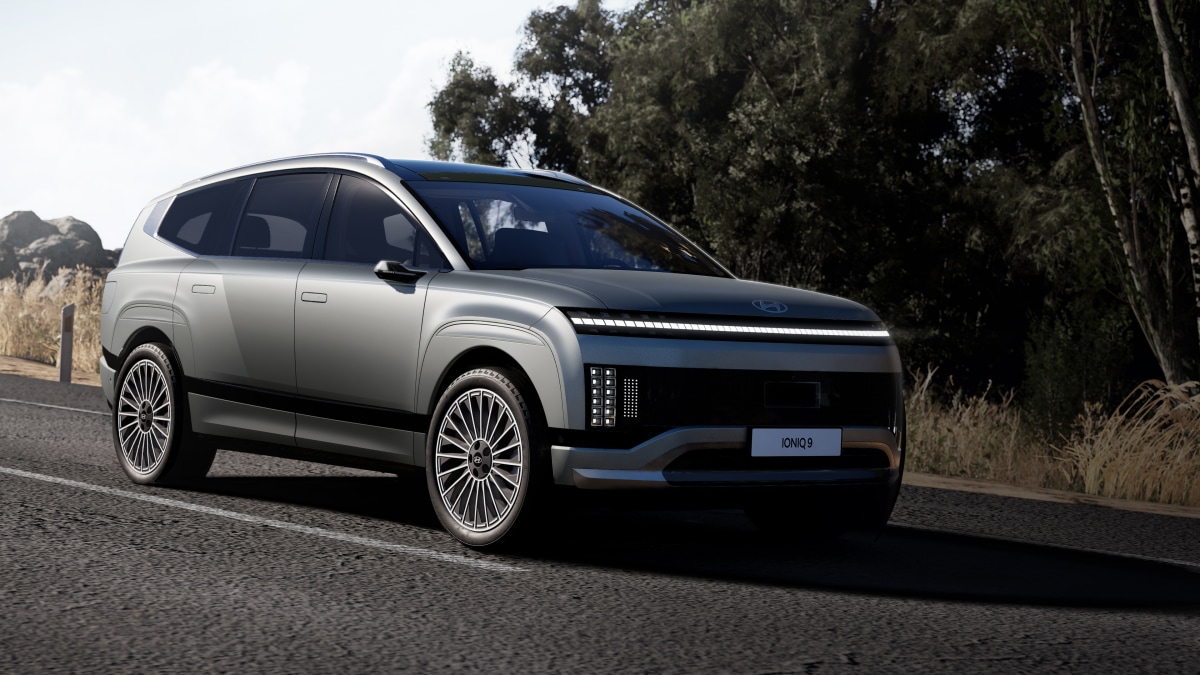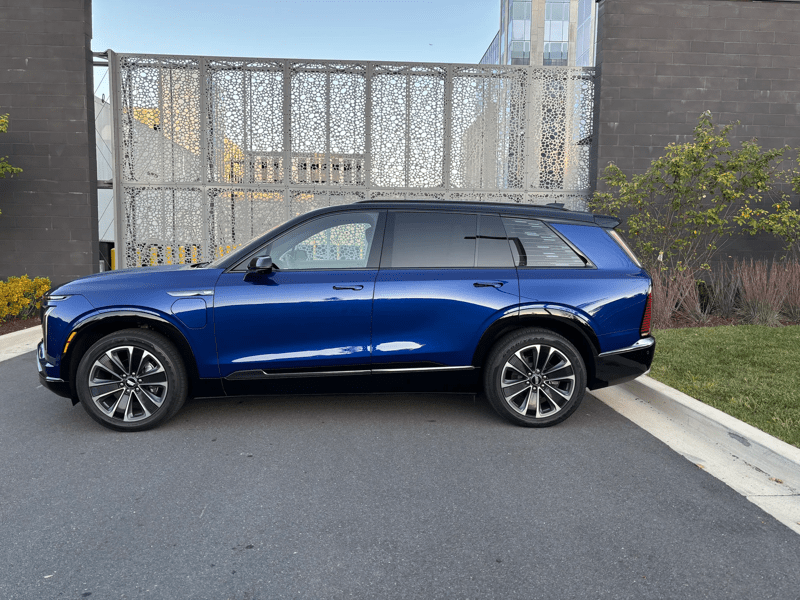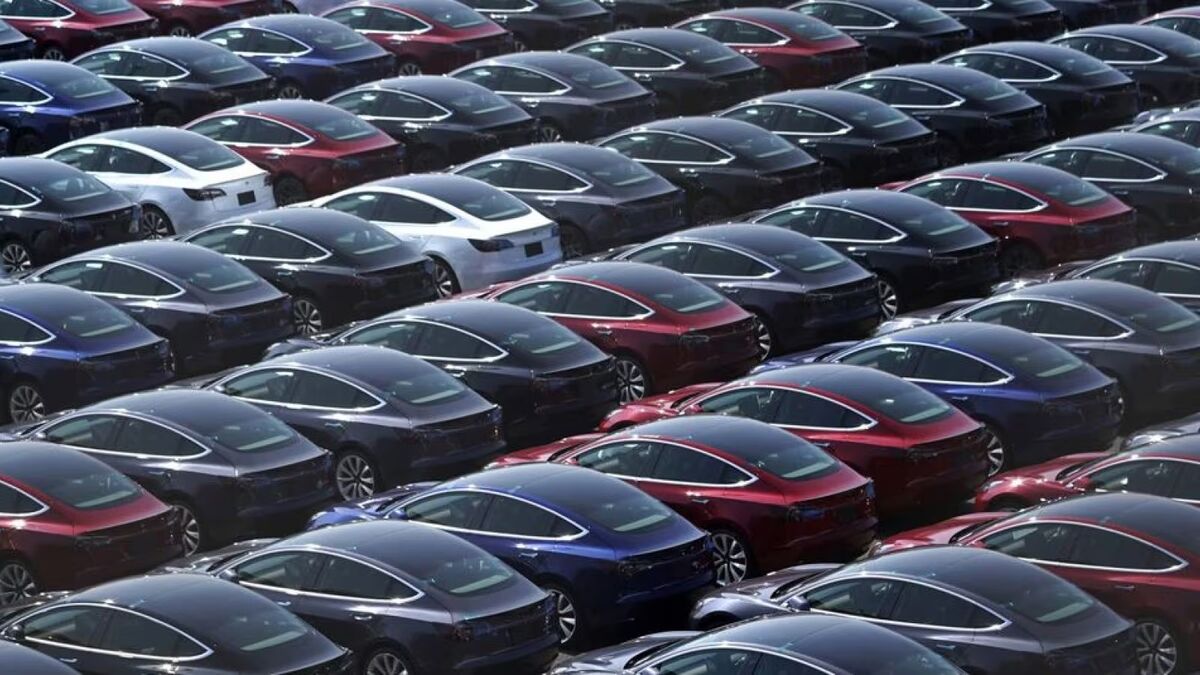Hyundai is using this week’s Los Angeles Auto Show to raise the curtain on one of the more unique-looking new cars to hit American roads in recent years. The 2026 Hyundai Ioniq 9 is a 3-row, all-electric SUV with a combination of flat planes and blunt curves that feel almost steampunk in their retro-futurism.
This Design Isn’t Boring
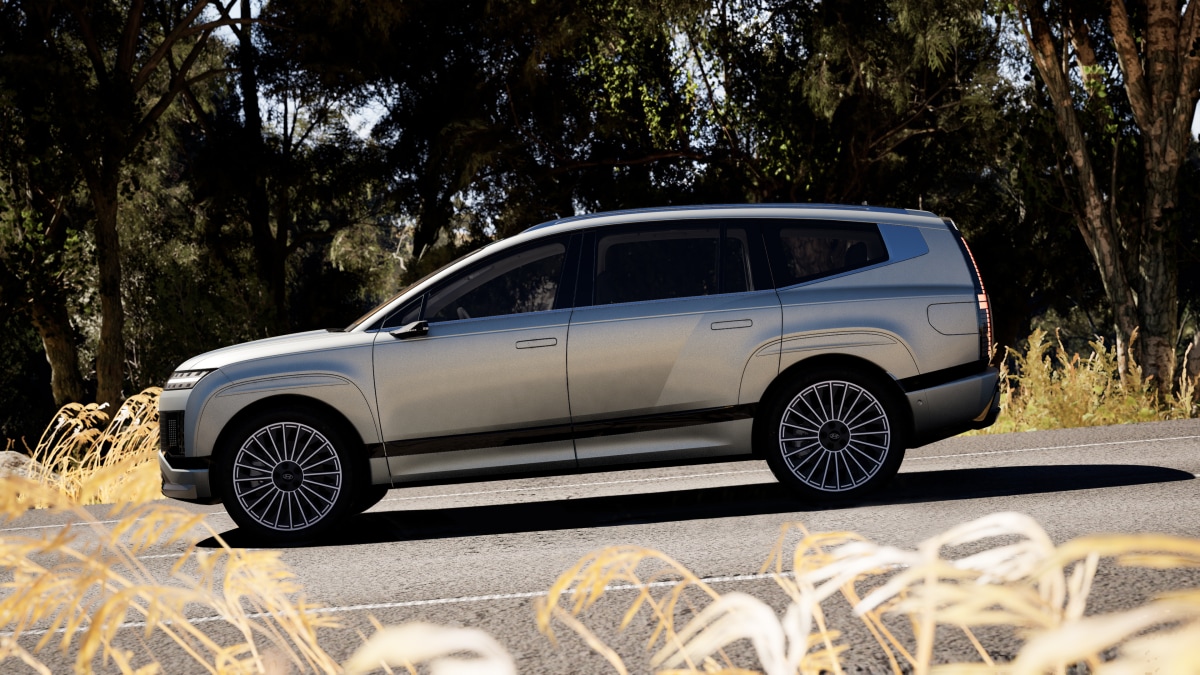
Hyundai’s Ioniq line of electric vehicles (EVs) have been some of the most eye-catching designs in recent years. While most automakers keep a predictable design language between all of their products so that they’re recognizably one lineup, I don’t think you could say that about the Ioniq 5 SUV and Ioniq 6 sedan.
The Ioniq 9 has themes in common with the Ioniq 5. But it doesn’t look like the same vehicle, stretched. In the gray Hyundai uses for publicity shots, it almost looks like The Iron Giant penned an SUV.
Look at the blunt curve of its nose and the flat, angular lines of its fenders separately, and it’s hard to picture them together. But fit them together, and the look simply works. It has similar dimensions to a Honda Pilot or a Chevrolet Traverse. But the Ioniq 9 would be at home in a sci-fi movie, and they wouldn’t.
Pixelated lighting is the one thing it decidedly has in common with other Ioniq vehicles.
It’s surprisingly aerodynamic for a 3-row SUV. Automotive engineers measure aerodynamics through a metric called coefficient of drag (Cd). The Ioniq 9 has a Cd of just 0.269 – a number we’d expect for a sports car. Active underbody flaps help it get there.
Lots of Open Space
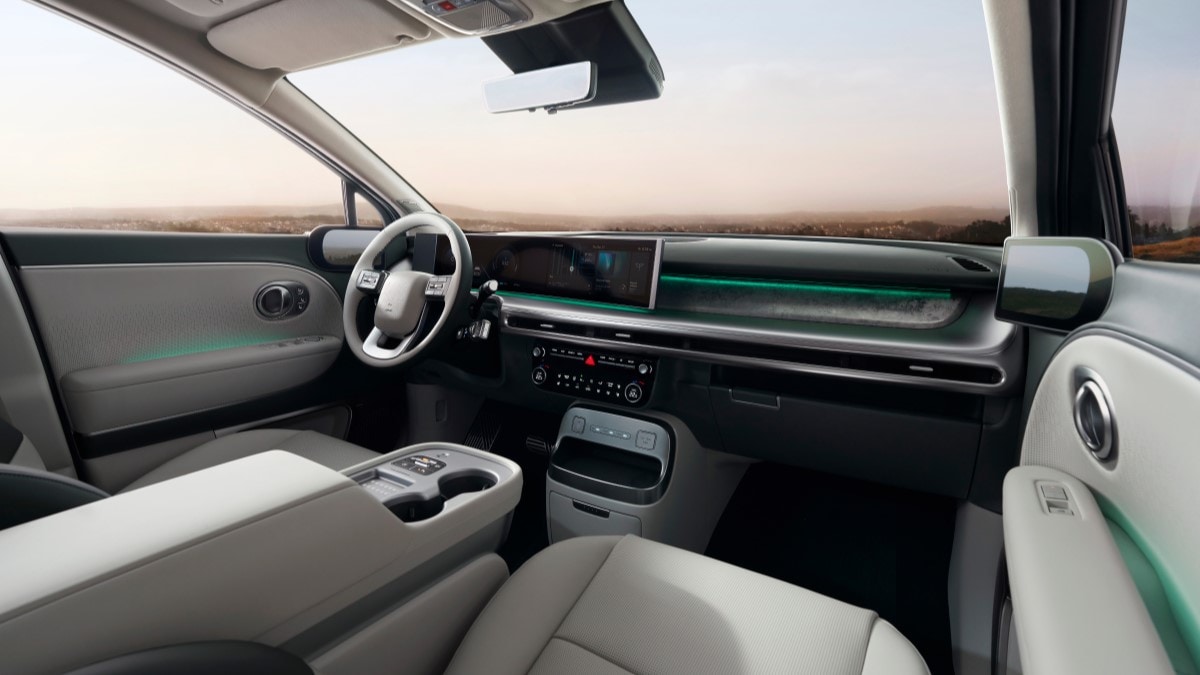
Moving inside, the design makes great use of space.
EVs lack the transmission hump that divides most vehicle cabins down the center. Many automakers mimic it because buyers tend to like what they know. Hyundai has not, in the Ioniq 9.
A perfectly flat floor gives the sensation of openness inside, even if ultimate legroom and shoulder-room measurements end up typical for the class. An upright dashboard contributes to the feeling.
The driver faces a 12-inch instrument cluster screen and a 12-inch central touchscreen, but you’d never know they weren’t one single 24-inch-wide curved screen surface.
The model Hyundai is showing off in L.A. includes one attention-getting feature we probably won’t see for sale in the U.S. – swiveling second-row seats. Corporate cousin Kia (the two companies share some ownership and use many common parts) does the same with its EV9 3-row SUV and sells the rotating seats only outside the United States.
But there’s no lack of interesting features inside, including a new AI-powered voice assistant. Hyundai says that will be available “in select markets only,” but we’d be surprised if the U.S. weren’t selected.
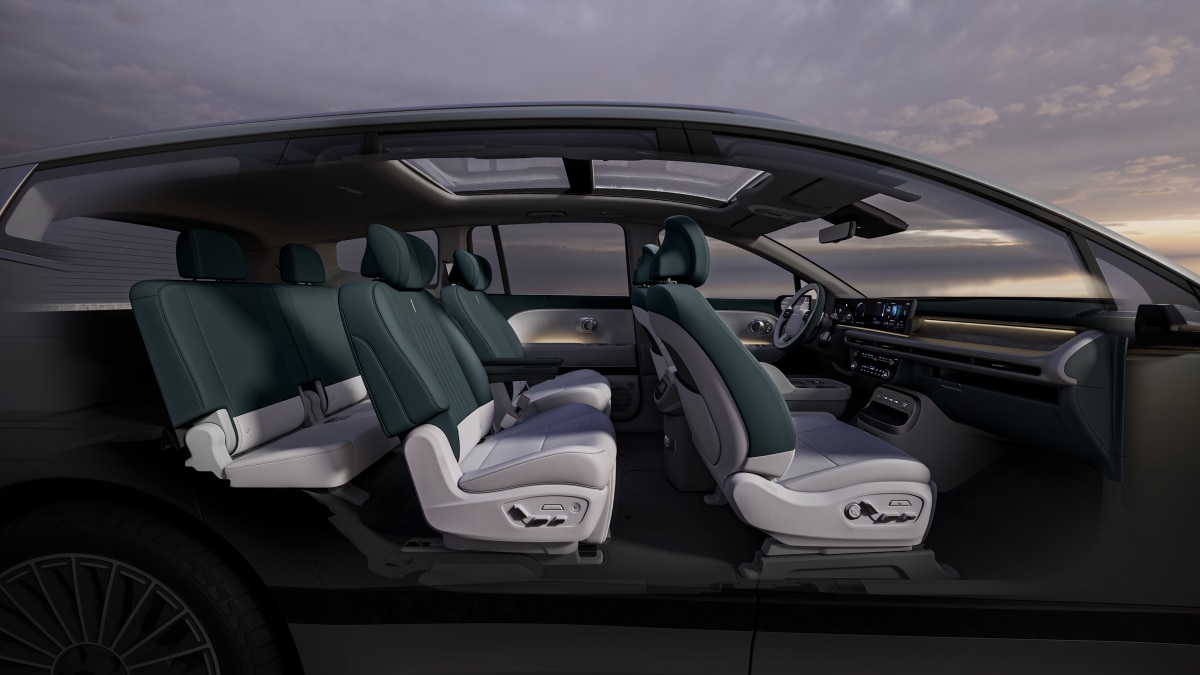
Subscription Fees
It may, however, require a subscription fee. Hyundai has long discussed the idea of subscriptions for car features and seems set to use the Ioniq 9 to introduce the idea to customers.
The company notes, “Hyundai Motor’s new Features on Demand (FoD) service is a unique offering that allows IONIQ 9 customers to further personalize their vehicle with digital upgrades purchased from the online store. The FoD products offer dynamic lighting patterns when opening the door, dynamic escort light when closing the door, and content streaming options including Amazon Music and Soundcloud.”
Up to 335 Miles of Range
The Ioniq 9 rides on the same platform as Kia’s EV9, and its performance numbers sort out similarly.
Every trim level will come with a 110.3-kilowatt-hour battery pack.
The base model will use a single electric motor mounted on the rear axle for rear-wheel-drive (RWD) dynamics, good for 215 horsepower. That gives it a perfectly adequate 8.4-second 0-60 mph time. That model can tow just 3,500 pounds.
Stepping up gets you a second motor on the front axle, meaning all-wheel drive (AWD) and bringing horsepower to 303 and a 0-60 mph time of 6.2 seconds.
A high-end Performance trim, also all-wheel drive, offers 442 hp and 4.9 seconds to highway speed.
Both AWD models can tow up to 5,000 pounds, which is in line with typical 3-row midsize SUVs.
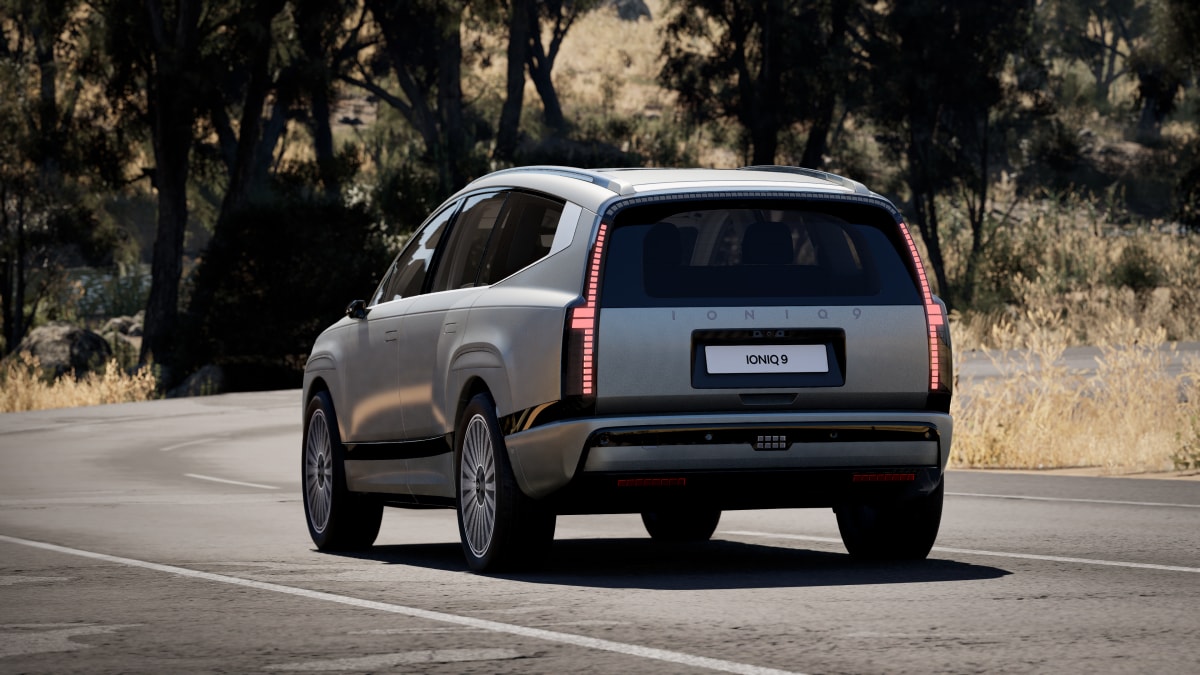
Hyundai hasn’t released range figures for each trim, saying only that range is “up to” 335 miles. That likely refers to the rear-wheel-drive model. The company claims the vehicle can charge from 10% to 80% of its battery capacity in just 24 minutes. That figure requires access to a public DC fast charger. Home chargers will be slower.
The Ioniq 9 features vehicle-to-load charging capability, meaning it could be used as a battery backup to power a house if your home electrical system has the equipment necessary for that.
Most Americans buy cars that look and feel like other cars. What works for most people likely works for you.
But the Ioniq 9 is interesting because it doesn’t look like other cars. It probably drives like them. The press hasn’t driven the car yet, but if it rides more or less like its Kia cousin, it’ll be a little bit fun for a family hauler.
That’s a great combination for those looking to stand out a little but not compromise much. Pricing and the pace of America’s EV adoption will dictate how many of these you see on the road. But a distinctive look in a showroom is an encouraging start.
